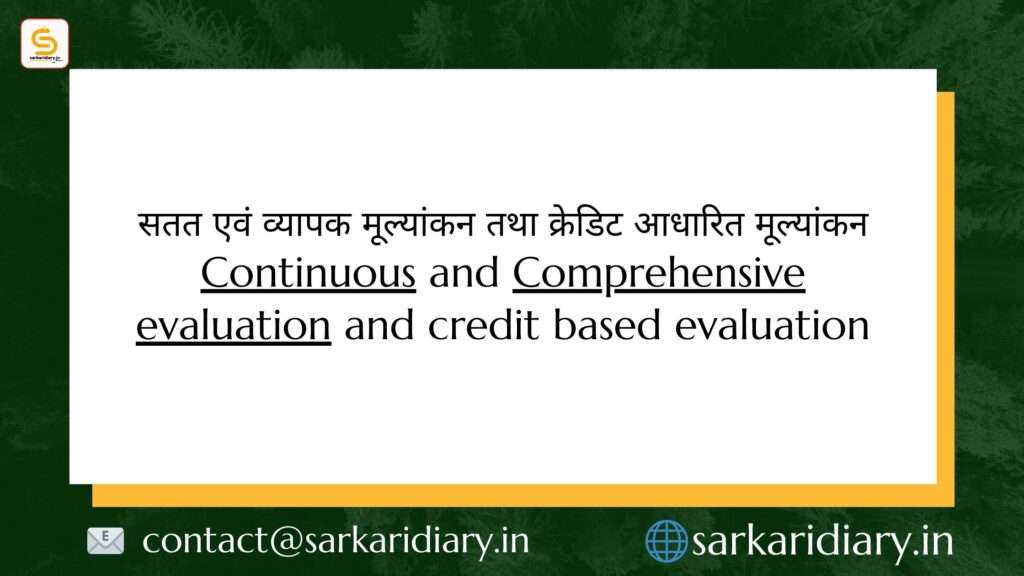Continuous and Comprehensive Evaluation
Continuous and Comprehensive Evaluation is a system of evaluation that aims to assess all aspects of a student’s development, both scholastic and non-scholastic. It was introduced in India in 2009 under the Right to Education Act. Continuous and Comprehensive Evaluation is based on the principle that evaluation should be an ongoing process that takes place throughout the year, rather than a one-time event at the end of the semester or year.

The goals of Continuous and Comprehensive Evaluation are to:
- Reduce stress and anxiety among students
- Promote holistic development
- Improve teaching-learning processes
- Provide feedback to students, parents, and teachers
Continuous and Comprehensive Evaluation uses a variety of assessment tools, including:
- Formative assessments: These are assessments that are conducted during the learning process to provide feedback to students and teachers.
- Summative assessments: These are assessments that are conducted at the end of a unit or semester to measure student achievement.
Continuous and Comprehensive Evaluation also uses a credit-based system to record student progress. Under this system, students are awarded credits for completing units of work. These credits can be used to earn a diploma or degree.
Credit-Based Evaluation (CBE)
Credit-based evaluation is a system of evaluation in which students earn credits for completing units of work. Credit-Based Evaluation is often used in conjunction with Continuous and Comprehensive Evaluation, as it provides a way to track student progress over time.
The benefits of Credit-Based Evaluation include:
- Increased flexibility for students
- Greater emphasis on learning outcomes
- Improved portability of credits
Key Features of Continuous and Comprehensive Evaluation and Credit-Based Evaluation
- Holistic evaluation: Continuous and Comprehensive Evaluation and Credit-Based Evaluation evaluate all aspects of a student’s development, including their cognitive, affective, and psychomotor skills.
- Continuous evaluation: Continuous and Comprehensive Evaluation and Credit-Based Evaluation use a variety of assessment tools to evaluate students throughout the year.
- Credit-based system: Continuous and Comprehensive Evaluation and Credit-Based Evaluation use a credit-based system to record student progress.
While both Continuous and Comprehensive Evaluation and Credit-Based Evaluation have their own merits, they serve different purposes in the education system. Continuous and Comprehensive Evaluation focuses on the overall development of students and provides continuous feedback, while Credit-Based Evaluation focuses on measuring academic performance through credits.
It is important to note that Continuous and Comprehensive Evaluation is primarily used in primary and secondary education, whereas Credit-Based Evaluation is more commonly used in higher education. Both methods have been designed to cater to the specific needs of the respective education levels.
Overall, Continuous and Comprehensive Evaluation and Credit-Based Evaluation are two important systems of evaluation that can help to improve student learning outcomes.